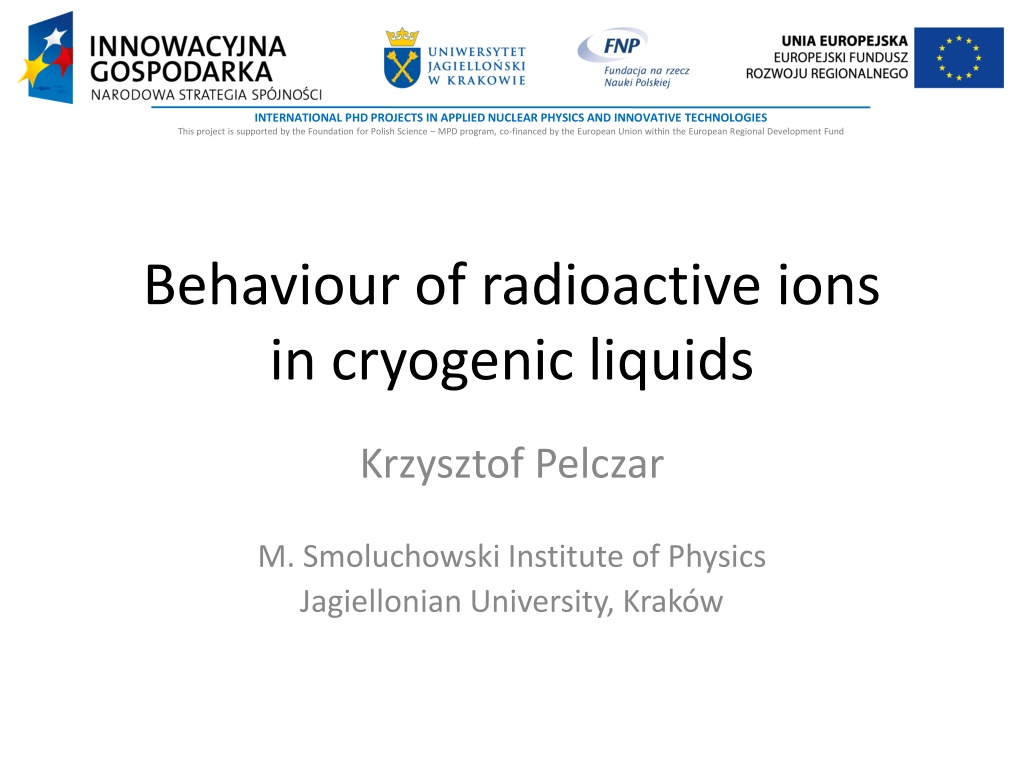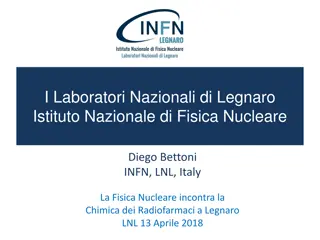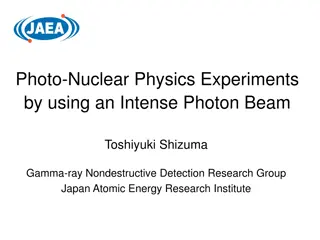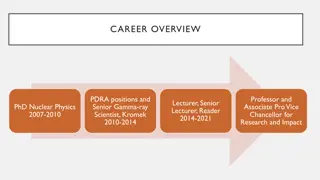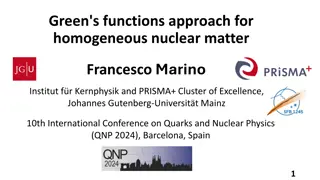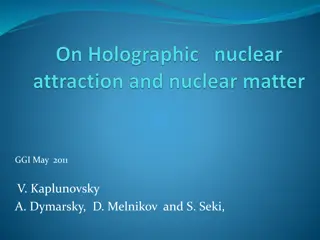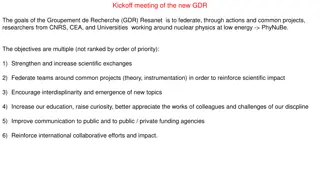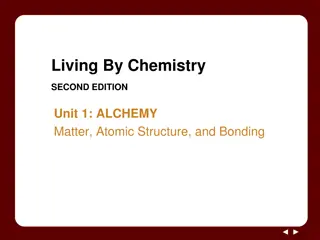Exploring Advanced Nuclear Physics and Technologies in International PhD Projects
Delve into cutting-edge research projects in applied nuclear physics and innovative technologies supported by the Foundation for Polish Science. Investigate the behavior of radioactive ions in cryogenic liquids and delve into physics beyond the Standard Model through experiments like double-beta decay and the GERDA Experiment. Unravel mysteries such as cold dark matter and drift in E-field phenomena, shedding light on the fundamental aspects of cosmology, astrophysics, and particle physics.
Download Presentation

Please find below an Image/Link to download the presentation.
The content on the website is provided AS IS for your information and personal use only. It may not be sold, licensed, or shared on other websites without obtaining consent from the author. Download presentation by click this link. If you encounter any issues during the download, it is possible that the publisher has removed the file from their server.
E N D
Presentation Transcript
INTERNATIONAL PHD PROJECTS IN APPLIED NUCLEAR PHYSICS AND INNOVATIVE TECHNOLOGIES This project is supported by the Foundation for Polish Science MPD program, co-financed by the European Union within the European Regional Development Fund Behaviour of radioactive ions in cryogenic liquids Krzysztof Pelczar M. Smoluchowski Institute of Physics Jagiellonian University, Krak w
Physics beyond the Standard Model is probed by the most advanced experiments Double-beta decay The GERDA Experiment Ions in cryogenic liquids 42Ar/42K and 222Rn Cold Dark Matter The DarkSide Experiment Electrostatic chamber for on-line gas monitoring But the key to their success is in the extremely low background levels. 2
Double beta decay 2 0 ( ) ( ) ( ) ( ) + + + + 2 + , , 2 2 Z A Z A e , , 2 2 Z A Z A e e Allowed in SM and observed for several isotopes with forbidden single beta decay. Conserves lepton number. Long half-lifetimes (1019 1021y). Does not conserve lepton number ( L=2). Possible if neutrinos are Majorana particles. Expected lifetimes > 1026y. 3
The GERDA Experiment @ LNGS Steel cryostat with internal Cu shield Clean room Lock system Phase I: 10-2cts/(kg keV yr) Array of bare Ge-diodes Water: ,n shield Cherenkov medium for veto High-purity liquid argon (LAr) shield & coolant Phase II: active veto 4
Drifting in E-field Surprising 42K + - 42K 42Ar - decays to 42K+ Charged 42K drifts towards the detector 42K -decays (Q = 3525 keV, above Q ) possibly nearby the detector O2 e- + + Detector surface 42Ar 42K 42K e- + - Ar e- + 42K 42K + Ar - O2- Germinate recombination Recombination on electronegative impurities s s min h TIME 5
Cold Dark Matter One of the candidates are WIMPs Weakly Interacting Massive Particles, possibly detectable through their collisions with ordinary nuclei, giving observable low-energy (<100 keV) nuclear recoils Astronomical evidences (large- scale galaxy surveys and microwave background measurements) indicate that the majority of matter in the Universe is non-baryonic The dark matter is typically a factor of 10 times greater in total mass The nature of this non-baryonic component is unknown, but of fundamental importance to cosmology, astrophysics, and elementary particle physics 6
The DarkSide Experiment WIMP Gaseous argon Liquid argon Two-phase Liquid Argon TPC 7
DarkSide Electrostatic Rn monitor On-line monitoring of the 222Rn content in the DarkSide clean- rooms (nitrogen, Rn-reduced air); Sensitivity ~1.5 mBq/m3 (750 atoms of Rn/m3). 8
Summary Achievements The GERDA Experiment GERDA Phase I search of the 76Ge 0 decay Papers EPJC 2013 PRL 2013, highlighted by the APS JPG 2013 EPJC 2014 EPJC 2013 Measurement of 2 decay lifetime GERDA background model New pulse shape discrimination techniques in Ge detectors GERDA Ge detectors characterisation Model of 222Rn and its daughters in cryogenic liquids Subm. EPJC 2014 NIMA 2014 APPB Supp. 2013 42Ar/42K model ( Symposium on applied nuclear physics and innovative technologies UJ) 222Rn model ( Low radioactivity techniques LNGS) Application of the 222Rn model the DarkSide experiment Alpha spectrometry optimization techniques LArGe experimental setup, first nat. 42K measurement AIP Proc. 2013 tbp 2014 JARI 2013 tbp 2014 9
Summary 12 papers 3 talks on (international) conferences ( Particles and Cosmology , Troitsk, INR, Russia; Low Radioactivity Techniques , Assergi, LNGS, Italy; tmex2014 , Warsaw, NCBJ, Poland) 1 poster ( Astrofizyka Cz stek w Polsce , Cracow, UJ, Poland) Multiple presentations (6) and reports (5) within the GERDA and DarkSide collaborations Advanced software and Appliances: LArGe slow control system MPIK Heidelberg ultra-sensitive mass-spectrometer software DarkSide online radon monitor (design, simulation, assembly and software) GERDA Phase II PMT scaler (design, assembly and software) 10
References Prof. W jcik Group, ZDFK UJ: http://bryza.if.uj.edu.pl/ The GERDA Experiment: http://www.mpi-hd.mpg.de/gerda/ The DarkSide Experiment: http://darkside.lngs.infn.it/ 11 11
